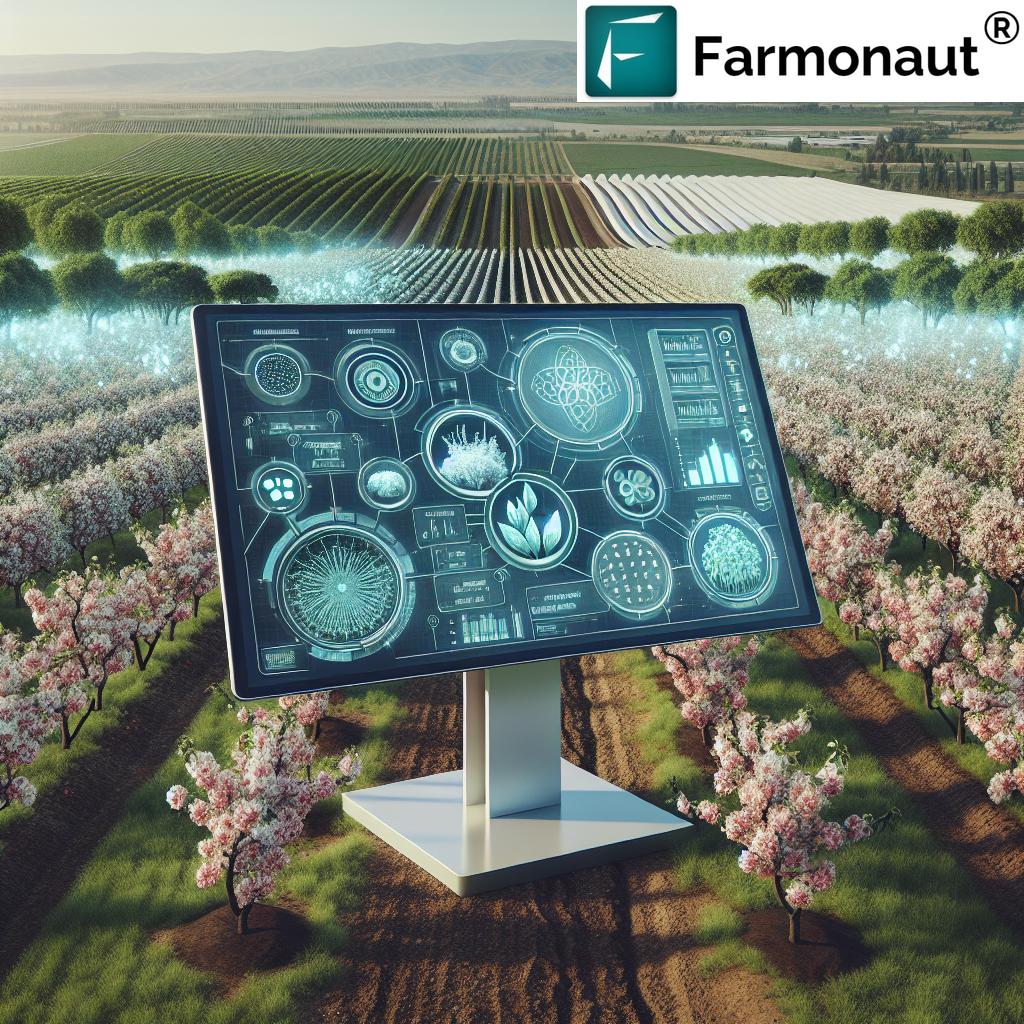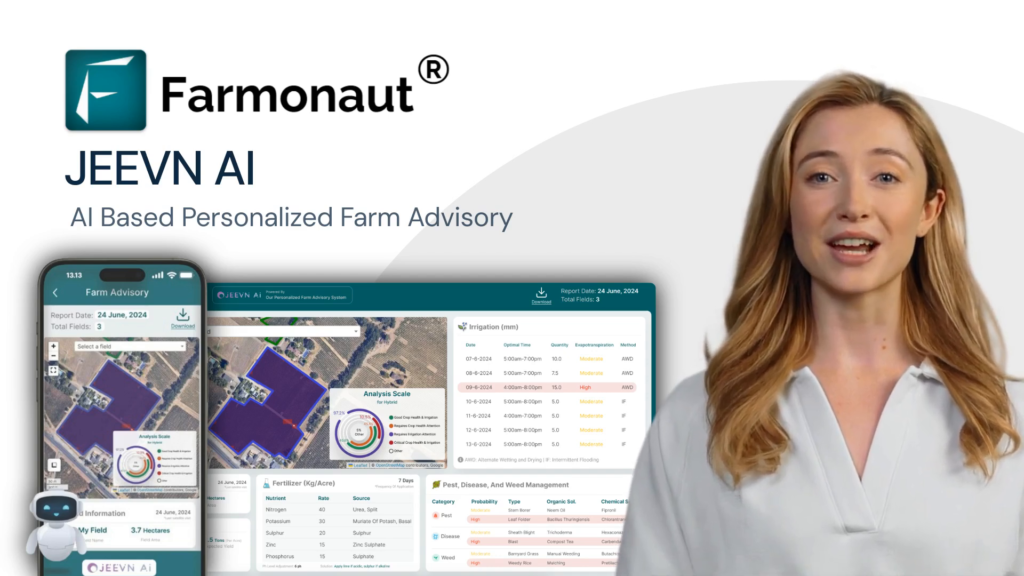Revolutionizing United States Agriculture: How Precision Farming and Digital Solutions Boost Crop Performance
“Precision agriculture can increase crop yields by up to 30% while reducing water usage by 50%.”
In the heartland of the United States, a quiet revolution is taking place. The fields that have long been the backbone of American agriculture are undergoing a dramatic transformation, powered by cutting-edge technology and innovative digital solutions. At the forefront of this agricultural renaissance is precision farming, a suite of technologies and practices that are reshaping how we grow, manage, and harvest crops. In this comprehensive exploration, we’ll delve into how these advancements are boosting crop performance and setting the stage for a more sustainable and productive future in farming.
The Dawn of Precision Agriculture in the United States
Precision agriculture, often referred to as precision farming or precision ag, represents a paradigm shift in how we approach crop cultivation. At its core, it’s about doing more with less – maximizing yields while minimizing resource use. This approach is particularly crucial in the United States, where agricultural efficiency is not just an economic imperative but also a matter of global food security.
The advent of precision farming in the U.S. has been driven by several factors:
- The need to feed a growing global population
- Increasing pressure on natural resources
- The challenges posed by climate change
- The push for more sustainable agricultural practices
As we navigate these challenges, digital farming solutions have emerged as powerful tools in the modern farmer’s arsenal. These technologies are not just improving crop performance; they’re revolutionizing every aspect of farm management, from pre-season planning to post-harvest analysis.
The Role of Digital Farming Solutions in Modern Agriculture
Digital farming solutions encompass a wide range of technologies and practices that leverage data, connectivity, and advanced analytics to optimize agricultural operations. These solutions are transforming farms into smart, connected ecosystems where decisions are driven by real-time insights and precision is the norm rather than the exception.
Key components of digital farming include:
- Satellite Imagery and Remote Sensing: Providing a bird’s-eye view of crop health and field conditions
- IoT Sensors: Collecting real-time data on soil moisture, temperature, and other critical parameters
- Farm Management Software: Centralizing data and operations for improved decision-making
- Precision Application Technologies: Enabling targeted use of inputs like fertilizers and pesticides
- Data Analytics and AI: Processing vast amounts of data to generate actionable insights
These technologies work in concert to create a more efficient, productive, and sustainable agricultural system. Let’s explore how each of these components contributes to boosting crop performance.
Satellite Imagery: The Eyes in the Sky
One of the most transformative technologies in precision agriculture is satellite imagery. By providing regular, high-resolution images of agricultural land, satellites have become indispensable tools for modern farmers.
How Satellite Imagery Boosts Crop Performance:
- Early Detection of Issues: Satellite images can reveal problems like pest infestations or nutrient deficiencies before they’re visible to the naked eye.
- Optimized Resource Allocation: By identifying areas of stress or low productivity, farmers can target their efforts more effectively.
- Yield Prediction: Advanced algorithms can analyze satellite data to forecast crop yields, helping with planning and market decisions.
- Monitoring Crop Development: Regular imagery allows farmers to track crop growth stages and make timely interventions.
Platforms like Farmonaut have made satellite-based crop monitoring accessible and affordable for farmers of all scales. By integrating this technology into their daily operations, U.S. farmers are gaining unprecedented insights into their fields, leading to more informed decision-making and improved crop performance.
IoT Sensors: The Pulse of the Field
While satellites provide a macro view, Internet of Things (IoT) sensors offer micro-level insights into field conditions. These small, connected devices are revolutionizing how we monitor and manage our crops.
Benefits of IoT Sensors in Agriculture:
- Real-Time Monitoring: Sensors provide continuous data on soil moisture, temperature, humidity, and other critical factors.
- Precision Irrigation: Water usage can be optimized based on real-time soil moisture data, reducing waste and improving crop health.
- Weather Tracking: Local weather stations can provide hyper-local climate data for more accurate decision-making.
- Pest and Disease Management: Sensors can detect conditions conducive to pest infestations or disease outbreaks, allowing for preventive action.
By integrating IoT sensors with farm management platforms, U.S. farmers are creating smart, responsive agricultural systems that can adapt to changing conditions in real-time.
Farm Management Software: The Brain of the Operation
At the heart of precision agriculture lies farm management software – powerful platforms that integrate data from various sources to provide a comprehensive view of farm operations. These digital solutions are transforming how farmers plan, execute, and analyze their activities.
Key Features of Modern Farm Management Platforms:
- Centralized Data Management: All farm data, from crop histories to equipment logs, is stored and accessible in one place.
- Planning Tools: Advanced planning modules help optimize crop rotations, input use, and resource allocation.
- Task Management: Streamlined scheduling and task assignment improve operational efficiency.
- Compliance Management: Built-in tools help ensure adherence to regulatory requirements and sustainability standards.
- Performance Tracking: Detailed analytics provide insights into farm performance and areas for improvement.
Platforms like Farmonaut offer comprehensive farm management solutions that cater to both row and permanent crops, enabling farmers to tailor their approach based on their specific needs and crop types.

Precision Application Technologies: Targeting Resources Where They’re Needed Most
One of the most significant advancements in precision agriculture has been the development of precision application technologies. These systems allow for the targeted application of inputs like fertilizers, pesticides, and water, ensuring that resources are used efficiently and effectively.
Impact of Precision Application on Crop Performance:
- Reduced Input Costs: By applying resources only where needed, farmers can significantly cut down on input expenses.
- Improved Crop Health: Targeted applications reduce the risk of over-or under-application, leading to healthier crops.
- Environmental Benefits: Precision application minimizes runoff and environmental impact, promoting sustainable farming practices.
- Increased Yields: By ensuring that each plant receives optimal inputs, overall yields can be significantly improved.
The integration of precision application technologies with farm management software and satellite imagery creates a powerful system for optimizing crop performance. Farmers can use data-driven insights to make informed decisions about when, where, and how to apply inputs for maximum effect.
Data Analytics and AI: Turning Information into Action
The true power of precision agriculture lies in its ability to process and analyze vast amounts of data to generate actionable insights. Advanced data analytics and artificial intelligence are playing an increasingly crucial role in this process.
How Data Analytics and AI are Revolutionizing Agriculture:
- Predictive Analytics: AI algorithms can forecast crop yields, pest outbreaks, and market trends with increasing accuracy.
- Automated Decision Support: AI-powered systems can provide recommendations for optimal planting times, harvest dates, and input applications.
- Pattern Recognition: Machine learning algorithms can identify patterns in crop performance data, helping to optimize farming practices over time.
- Risk Management: Advanced analytics help farmers assess and mitigate risks related to weather, market fluctuations, and other factors.
By leveraging these technologies, U.S. farmers are not just reacting to conditions but proactively managing their crops for optimal performance.
“Satellite-based farm management platforms can analyze over 500,000 acres of farmland daily for crop health monitoring.”
The Integrated Ecosystem: Connecting Growers, Service Providers, and Contractors
One of the most exciting developments in precision agriculture is the creation of integrated ecosystems that connect various stakeholders in the agricultural value chain. These platforms bring together growers, service providers, contractors, and other industry partners in a collaborative environment.
Benefits of an Integrated Agricultural Ecosystem:
- Improved Coordination: Better communication and coordination between farmers and service providers lead to more timely and effective interventions.
- Shared Knowledge: Platforms facilitate the exchange of best practices and insights across the farming community.
- Streamlined Operations: Integrated scheduling and management tools improve operational efficiency for both farmers and contractors.
- Data-Driven Decisions: Access to a broader pool of data enables more informed decision-making at all levels of the agricultural process.
Farmonaut’s platform exemplifies this integrated approach, offering a collaborative ecosystem that enhances farm management from pre-season planning to post-harvest analysis.
Precision Agronomy: Tailoring Practices to Field-Level Conditions
Precision agronomy takes the principles of precision agriculture and applies them at a granular level, tailoring farming practices to the specific needs of each field or even sections within a field. This approach recognizes that soil conditions, topography, and other factors can vary significantly even within a single farm.
Key Aspects of Precision Agronomy:
- Site-Specific Management: Tailoring inputs and practices to the specific needs of different areas within a field.
- Variable Rate Technology (VRT): Applying inputs at variable rates across a field based on precise soil and crop data.
- Soil Sampling and Mapping: Creating detailed soil maps to inform precise management decisions.
- Crop Monitoring: Using sensors and imagery to track crop development and health at a granular level.
By implementing precision agronomy practices, U.S. farmers are seeing significant improvements in crop performance, resource efficiency, and overall farm profitability.
On-Farm Trials: Continuous Improvement Through Experimentation
The adoption of digital farming solutions has made it easier than ever for farmers to conduct on-farm trials. These experiments allow growers to test new varieties, techniques, or technologies under real-world conditions on their own farms.
Benefits of On-Farm Trials:
- Tailored Solutions: Farmers can determine which practices work best for their specific conditions.
- Risk Mitigation: New approaches can be tested on a small scale before full implementation.
- Continuous Learning: Trials foster a culture of innovation and improvement on the farm.
- Data-Driven Decision Making: Results from trials provide concrete data to inform future farming decisions.
Modern farm management platforms often include tools for planning, executing, and analyzing on-farm trials, making it easier for farmers to integrate experimentation into their regular operations.

Compliance Management: Navigating Regulatory Requirements
As agricultural practices become more sophisticated, so do the regulatory requirements surrounding them. Digital farming solutions are playing a crucial role in helping farmers navigate this complex landscape.
How Digital Solutions Aid in Compliance Management:
- Record Keeping: Automated systems for tracking inputs, applications, and harvests ensure accurate and complete records.
- Regulatory Updates: Integrated systems can keep farmers informed about changes in regulations and requirements.
- Audit Preparation: Digital records and reports streamline the audit process and ensure compliance.
- Sustainability Tracking: Tools for monitoring environmental impact help farmers meet sustainability goals and certifications.
By simplifying compliance management, these digital solutions allow farmers to focus more on what they do best – growing crops and managing their land.
The Economic Impact of Precision Farming
The adoption of precision farming and digital solutions is not just about improving crop performance; it’s also having a significant economic impact on U.S. agriculture.
Economic Benefits of Precision Agriculture:
- Increased Yields: Precision techniques can lead to substantial increases in crop yields.
- Reduced Input Costs: More efficient use of fertilizers, pesticides, and water leads to cost savings.
- Improved Labor Efficiency: Automation and smart scheduling reduce labor costs and improve productivity.
- Better Risk Management: Data-driven decision-making helps mitigate financial risks associated with farming.
- Access to Premium Markets: Improved traceability and sustainability practices can open up higher-value market opportunities.
These economic benefits are making precision agriculture an increasingly attractive investment for farmers across the United States.
The Future of Precision Agriculture in the United States
As we look to the future, the role of precision agriculture and digital farming solutions in U.S. agriculture is set to grow even further. Several trends are shaping this future:
- Increased Adoption: As technologies become more accessible and affordable, we can expect wider adoption across all farm sizes.
- Integration of Emerging Technologies: Advancements in areas like artificial intelligence, robotics, and biotechnology will further enhance precision farming capabilities.
- Focus on Sustainability: Precision agriculture will play a key role in meeting sustainability goals and addressing climate change challenges.
- Data-Driven Decision Making: The ability to collect, analyze, and act on data will become increasingly central to successful farming operations.
- Collaborative Ecosystems: The trend towards integrated platforms that connect various stakeholders in the agricultural value chain will continue to grow.
As these trends unfold, platforms like Farmonaut will continue to evolve, offering increasingly sophisticated tools to help U.S. farmers navigate the challenges and opportunities of modern agriculture.
Precision Farming Technologies and Their Benefits
| Technology | Description | Estimated Yield Increase | Sustainability Impact |
|---|---|---|---|
| Satellite Imagery | Provides broad-scale crop health monitoring and field analysis | 5-15% | High |
| IoT Sensors | Collects real-time data on soil and environmental conditions | 10-20% | Medium |
| Precision Fertilizer Application | Applies fertilizer at variable rates based on field conditions | 15-25% | High |
| Farm Management Software | Centralizes data and operations for improved decision-making | 10-30% | Medium |
| Precision Irrigation | Optimizes water usage based on real-time soil moisture data | 20-30% | High |
Challenges and Considerations
While the benefits of precision agriculture are clear, there are also challenges that need to be addressed as we move forward:
- Initial Investment: The upfront costs of implementing precision agriculture technologies can be significant.
- Digital Literacy: Farmers need to develop new skills to effectively use these digital tools.
- Data Privacy and Security: As more farm data is collected and shared, ensuring its security and proper use becomes crucial.
- Interoperability: Ensuring that different systems and technologies can work together seamlessly is an ongoing challenge.
- Equitable Access: Ensuring that small and medium-sized farms can also benefit from these technologies is important for the overall health of the agricultural sector.
Addressing these challenges will be crucial to realizing the full potential of precision agriculture in the United States.
Conclusion: A New Era of American Agriculture
As we’ve explored throughout this article, precision farming and digital solutions are ushering in a new era of agriculture in the United States. By leveraging advanced technologies like satellite imagery, IoT sensors, and data analytics, farmers are gaining unprecedented insights into their operations and the ability to make more informed decisions.
The benefits of this revolution are clear:
- Improved crop performance and yields
- More efficient use of resources
- Reduced environmental impact
- Enhanced economic viability of farming operations
- Greater resilience in the face of climate change and other challenges
As these technologies continue to evolve and become more accessible, we can expect to see even greater transformations in how we grow, manage, and harvest crops. The future of U.S. agriculture is one of precision, efficiency, and sustainability – a future that promises to meet the growing demands of feeding the world while preserving our precious natural resources.
In this new agricultural landscape, platforms like Farmonaut are playing a crucial role, providing farmers with the tools and insights they need to thrive in an increasingly complex and data-driven world. By embracing these digital farming solutions, U.S. farmers are not just keeping pace with change – they’re leading the way towards a more productive, sustainable, and resilient agricultural future.
FAQ Section
Q: What is precision agriculture?
A: Precision agriculture is an approach to farm management that uses information technology and a wide array of items such as GPS guidance, control systems, sensors, robotics, drones, autonomous vehicles, variable rate technology, GPS-based soil sampling, automated hardware, telematics, and software to optimize returns on inputs while preserving resources.
Q: How does satellite imagery benefit farmers?
A: Satellite imagery provides farmers with a broad view of their fields, helping to identify issues like crop stress, pest infestations, or nutrient deficiencies before they’re visible to the naked eye. This allows for early intervention and more targeted management practices.
Q: What role does data analytics play in precision farming?
A: Data analytics processes the vast amounts of data collected from various sources (satellites, sensors, machinery, etc.) to provide actionable insights. This can include yield predictions, recommendations for input application, and identification of patterns that can improve overall farm management.
Q: How does precision agriculture contribute to sustainability?
A: Precision agriculture promotes sustainability by optimizing the use of resources like water, fertilizers, and pesticides. This reduces waste, minimizes environmental impact, and helps maintain soil health over the long term.
Q: Can small farms benefit from precision agriculture technologies?
A: Yes, while some precision agriculture technologies require significant investment, many solutions are becoming more affordable and accessible to small and medium-sized farms. Cloud-based platforms and mobile apps, for instance, can provide valuable insights without the need for expensive hardware.
Access Farmonaut’s Precision Agriculture Solutions
Ready to revolutionize your farming practices with cutting-edge precision agriculture tools? Farmonaut offers a range of solutions to suit your needs:
For Developers:
Integrate Farmonaut’s powerful satellite and weather data into your own applications:
API Access
API Developer Docs
Farmonaut Subscriptions
By leveraging these tools and resources, you can join the precision agriculture revolution and take your farming operations to the next level. Embrace the future of agriculture with Farmonaut’s comprehensive digital farming solutions.















